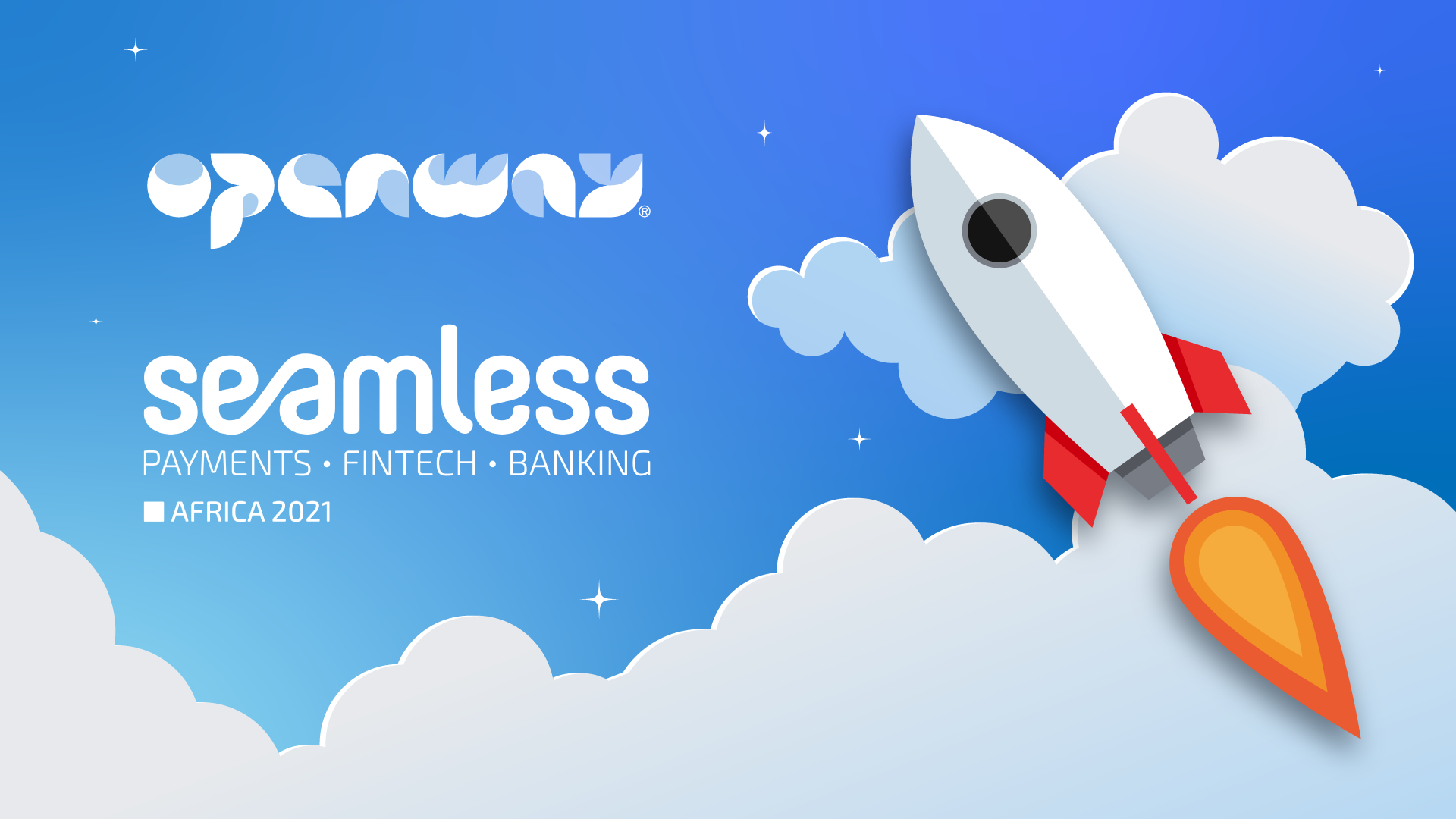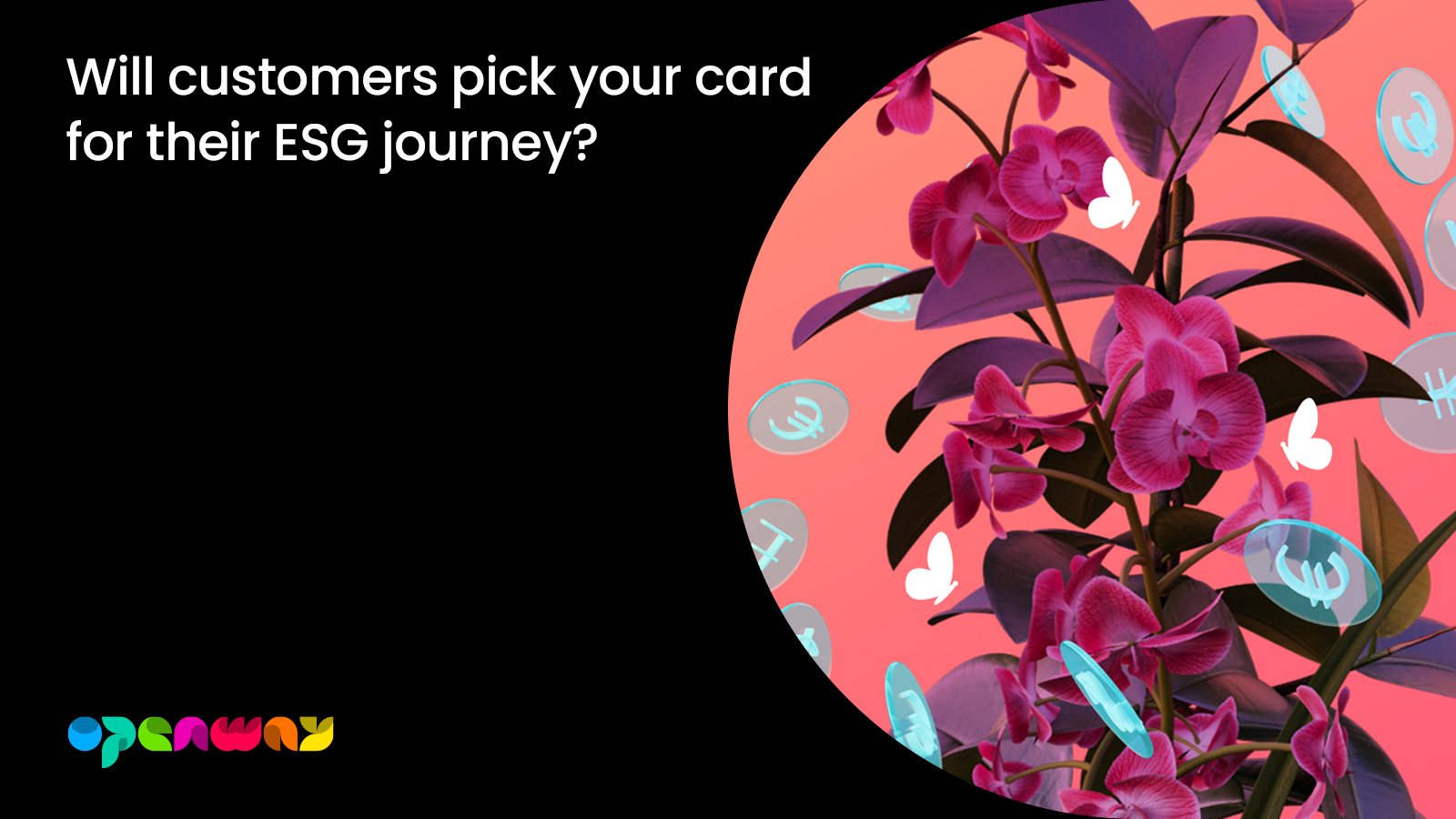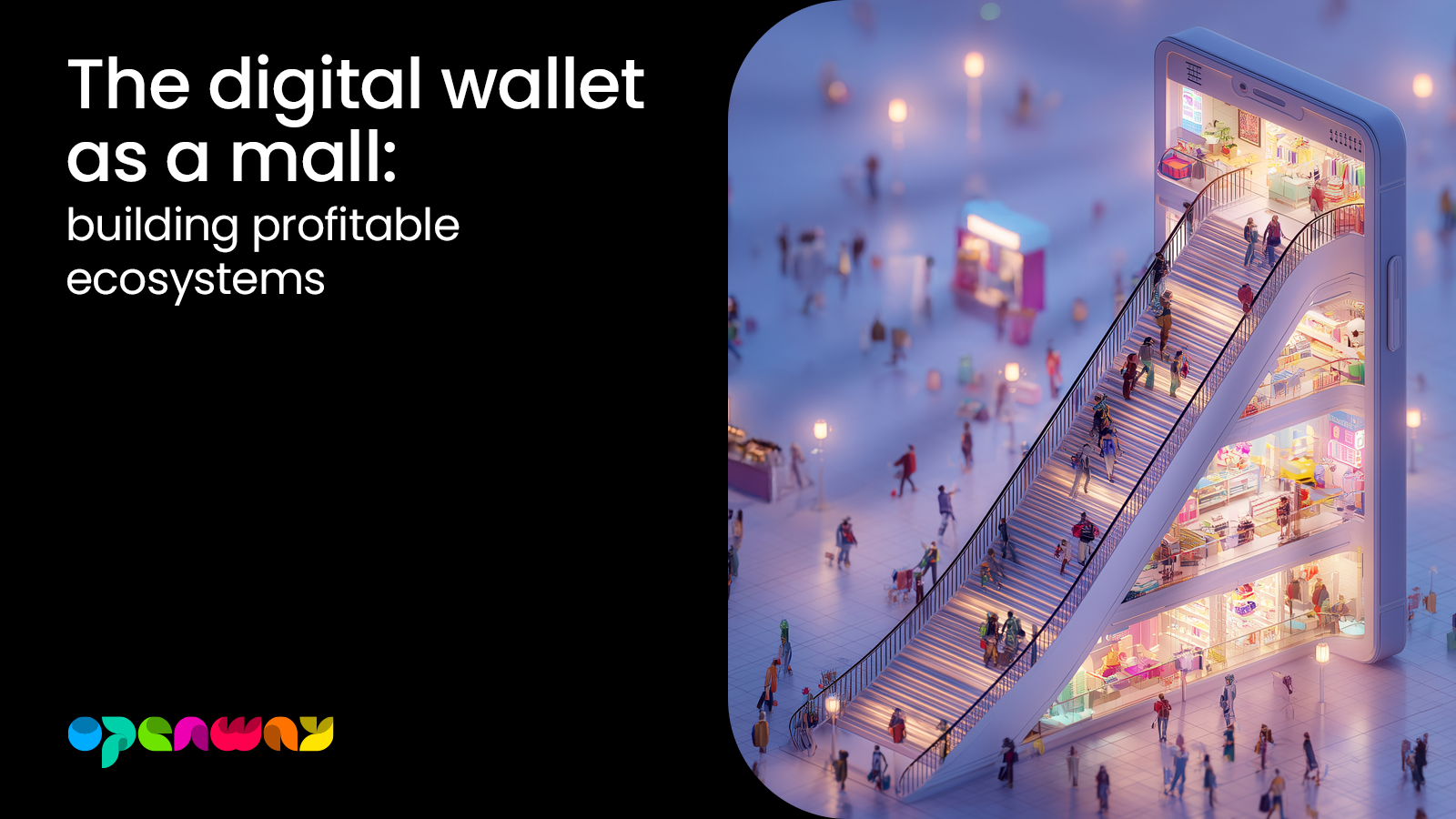
“The cloud is really the future of payments. Some years down the line, probably in the not-too-distant future, people will remember and say: "Back in the days when we still used to run everything on-premise…" So don’t be afraid of using the cloud in your payments business. Just embrace the cloud.”
Moderated by Rion Breslin, Head of Conferences Enterprise, Terrapinn Middle East
Rion Breslin: Hello, everybody, our next session this morning is going to be an interview on the theme: "Launching payment innovation faster with the use of cloud". Today I’ll be interviewing Dmitry, who is Chief Technology Officer of OpenWay. So, Dmitry, welcome to Seamless Africa!
Dmitry Yatskaer: Thank you everybody, happy to be here.
Rion Breslin: Good to have you here with us. So to start off, maybe you could introduce yourself first and tell us about OpenWay?
Dmitry Yatskaer: I’ve been with the company since 1997. I’ve watched it grow from a small startup to an international player and the best payments software solution provider in the world as recognized by various ratings. So just very briefly on what we are doing: we are providing software for issuers, acquirers, wallets, fuel operators… so everything around payments, real-time, near real-time. Everything that makes payments move. Thanks to our prevalence and the architecture of our solutions, and certainly our customer success commitment, we have been already rated as #1 by, most recently, Aite, Gartner and Ovum as #1 in CMS and wallets, and most recently, we got this nice award as being the best cloud software provider together with our customer Enfuce. If you look at some of the customer names, you can see that they are Tier-1 players, such as Equity Bank — they are running several countries on our Way4 platform. Also Network International, who is a huge player, certainly, in the African region. So I’m really happy to share our experience with you.
Rion Breslin: With a lot of the questions I want to tackle with you today, the number one question is – why the cloud? How can the cloud help with the launch of different payment innovations? How can cloud facilitate mobile-first experiences for the customer?
Dmitry Yatskaer: Great questions. First, you can see that the cloud is a catalyst for payment innovation. You can see it happening with the cloud or without the cloud, but cloud makes it faster and easier. Generally, with innovation you need a certain platform, certain software, and you also need skills from those who will administer and configure these platforms, take care of the software, of the business rules, if it is a flexible platform. What the cloud will do is bring this closer to you. It will blur or even eliminate the boundaries between you and technology, and between you and the vendor. Now, the most obvious when we think of the cloud is the infrastructure’s elasticity. Because when you launch your innovation, you never know how fast and when is it going to grow. So if the business suddenly starts growing at a crazy pace, in the cloud it is easier to just thrown in the CPUs, just throw in the hardware resources by clicking them in. You don’t need to worry whether you have provisioned enough hardware. You don’t need to think that now you need better boxes. I didn’t order the right boxes, now I have to wait another few months because the right boxes are in the customs. In the meantime, I’m running my business on downsized boxes, and my customers are not happy enough. So those worries you don’t have in the cloud.
And then, if you look from the software standpoint, generally, the cloud also makes it much smoother to augment your skillset, implement your software, and try out new software. Because really, with the cloud you get closer to vendors and partners. So, in fact, traditionally, with vendors you would expect them to travel on-site, especially in pre-covid times. Now, with the cloud, it’s normal to just make everything remote. Traditionally, if you would like the vendor to work remotely, you have to make some exercises with your security, so they can get securely inside your perimeter, and nowadays in the cloud it is really built for that kind of secure collaboration, so you don’t have to build it, you just have to enable a few privileges and this is something that you have in the cloud off the shelf.
Certainly, when we talk about a mobile-first experience, if you look generally at mobile and mobile-first solutions, that is where there is a real demand for API. The API has to be quick, they have to be highly available, smooth, slick, and that is where cloud helps a lot. For a solution to be mobile-first, you have to be sure that it can process mobile on a really large scale and grow, and it delivers a nice user experience. So all that together is fascilitated by that combination brought to you by the cloud.
Rion Breslin: Absolutely. So just moving the conversation slightly on, what are the real benefits of implementing card issuing, merchant acquiring, and digital wallet businesses in the cloud?
Dmitry Yatskaer: Right. I would start with wallets. It’s even easier to ask the question: "Why not go into the cloud right away?" Because with wallets, that is where you see the most benefits in the cloud, the most obvious. So often, a good wallet should become a good ecosystem, and the cloud is built to facilitate ecosystems. On the other hand, with wallets, you have to a smaller extent the concerns you have with issuing and acquiring, such as, how about payment scheme access points, how about HSMs, for wallets, it may even be optional. Often you would need some kind of HSM, but it’s less critical.
With issuing and acquiring, there are obvious advantages as well, particularly if you get it right. You can really change your approach to physical compliance and PCI. Especially as standards for PCI keep becoming tighter and more sophisticated. This is on top of everything I have already mentioned about getting closer to the vendor, getting the chance to implement great software to achieve a totally great scale, so all this flexibility, it is pretty obvious. Speaking of issuing or specifically for acquiring, today, to stand out against the competition, you need to have a flexible, scalable issuing or acquiring platform. It needs to be secure; it has to be highly available. That’s where cloud is helpful to add extra, different value-added services to your card holders. For instance, think about loans to your merchants. It will be so much easier if your acquiring platform has great APIs and running in the cloud to offer this value-added service to your merchants, maybe being the first in your region to do it.
Rion Breslin: What kind of businesses should be the first to adopt a cloud strategy?
Dmitry Yatskaer: I would say that certainly, if you have a wallet project, and for some reason you haven’t considered a cloud-enabled or a cloud-based project, that would be the first one to try. And then, if you look at the rest of the infrastructure, particularly in payments, issuing, and acquiring, I would say, just consider just with any other kind of migration, you should look at the pain points. So if your pain point is that your switch is outdated, if the switch has been there for — God knows how many years, 15, 20 — just some upgrades, and you are thinking of replatforming it, it’s time to look around and find a vendor who has real live experience in the cloud, who is already well established, where you can make it better, smoother, and faster. Similarly, if your card management or merchant billing system is already lacking flexibility, it’s just not up to date in bringing all the products, think about bringing that one. On the other hand, generally, if you are planning a replatforming project, it’s a really great time to combining it with the cloud. Now, of course, if you look generally, the operational model is something else. Because if you look at a traditional on-premise platform, you would have generally two payment models. One is: just run it all by yourself, and another model is outsource almost everything to a processor. The good thing about the cloud for issuers and acquirers, as well as the wallet players, is that you’ve got SaaS, you’ve got infrastructure-as-a-service, platform-as-a-service, and there are things in between. You can still have the advantages of on-prem licensing, but also combine it with plenty of the advantages of outsourcing. There again, you just need to pick the right partner who can actually offer you that, who can even ideally offer you flexibility so that if you want to start in the cloud, move some things on-prem, or move it back to the cloud, take your infrastructure to the cloud, move it under service, they can offer you that seamlessly. You don’t need to combine many different layers and make it complicated; you can make it as easily as possible.
Rion Breslin: What are the most common pitfalls and misconceptions when it comes to payments in the cloud?
Dmitry Yatskaer: Great one. There are quite a few, otherwise everyone would already be in the cloud. The good thing is that we already have some industry experience, so you can look around and avoid those pitfalls. So one of those, the most obvious one, just any industry of payments, non-payments, is that you don’t do a good enough calculation and prediction of the PNL, of the cost. So you just throw things into the cloud and hope that maybe, somehow it will be cost-effective, because everyone is saying that it is. The reality of what happens is with that mindset, you move it to the cloud, and very soon you realize that you just need to book extra capacity, and extra capacity, and more extra capacity, etc. Then all of the sudden you figure out that you have overbooked too much capacity, and then your PNL is not exactly improving compared to on-prem. On top of that, the migration complexity and the costs are not exactly improving, they are getting worse. And then, it takes a couple of years — two years, three years — to improve your PNL and to figure out how to make the right resource prediction and how to plan your cloud resources, how to optimize those parts that are overconsuming. Maybe you will even question, have I picked the right cloud provider? Because that’s another pitfall, it’s assuming by default that all clouds are the same. Or assuming, for instance, I have my friend who is happy with this cloud, and this will of course be the right cloud for me. But really, to look at what is the right cloud for you, for your business size, for your needs, for your industry that you are in, if you are a big enterprise, look for an enterprise-scaled cloud. Don’t look for a cloud that is just good for small businesses but not enterprise-scale.
Another moment is when sometimes customers try to exactly replicate their current architecture and systems, and just move it to the cloud, you don’t necessarily get benefits. You may potentially have plenty of costs if your applications are not built to run in the cloud. They will technically run there, but they will consume your cloud credits like crazy, and that is not the goal.
Finally, the other extreme, another pitfall, is to assume: "My legacy infrastructure is already old, but I have no desire to look for vendors, products, because I have a bunch of young guys. They’re great, with flashing eyes, they say: look, don’t worry, wow, with cloud, this is so easy! We can develop everything...your issuing, your acquiring, Visa, Mastercard, come on! This is almost like another API, it’s nothing! Just give me a few months and you know, we’re doing it in agile! And in a few months, you will get a fantastic everything in the cloud." No, forget it. It’s not that easy. If it was that easy, everyone would have done it already. Of course, you have bright people, you have talent. Definitely. But on the other hand, there is growing complexity. So when we started 25 years back, I remember how much easier it was to build a switch and CMS from scratch. Nowadays, if you start, it’s a huge investment because of all the standards and complexity. So it is great to leverage on the startups. To leverage on their talent for the things where they are most efficient, so building beautiful user experiences: building UI, building add-on systems, starting up spin-offs and fintechs cooperating. But for your backbone, just be careful there.
Rion Breslin: So what would be your advice on finding and engaging with the right partners for cloud payment projects?
Dmitry Yatskaer: Great question. So look at where the real expertise is of that partner. Look what are their real expertise, what their real customer experience is, what models can they offer, what kind of clouds do they really support, look how well they are connected with particular cloud providers, if they can help you with advice there. And definitely, look at how easy is their platform to be integrated – look how fit is their architecture to the cloud. Ask them questions. Check certainly their APIs. How rich is their API, what standards is it fitting...look at yourself and imagine that you are that particular partner, whom tomorrow you would like to integrate with that particular platform. Look at their API and think, would it be easier for me? Yes or no. So just a few pieces of advice.
Rion Breslin: So we’ve gone through a number of important points today. Just to finish up, would you share OpenWay’s vision of complete adoption of payments in the cloud?
Dmitry Yatskaer: Right, so in the cloud, generally, our vision is that the cloud is really the future of payments. Some years down the line, probably in the not-too-distant future, people will remember and say: "Back in the days when we still used to run everything on-premise…" That’s my impression. It may take some time, because in some regions you have a better presence of cloud vendors and some tackle the cloud themselves in the data centers, so it all depends on that, but keeping looking for that, it will definitely come. Just look at how it happened with mobile. Now, from our standpoint, there are many shapes of the cloud. We want to be your preferred partner, your partner of choice, no matter what the model for the cloud. If you’re looking for infrastructure-as-a-service, we are really happy to do it with you. If you’re looking for software-as-a-service, we are certainly happy. If you are starting and are looking for a good processor that has things in the cloud that combines with a good platform, we are there to help, to bring you in touch with those processors as well, or to offer our own SaaS. In any shape we are there, and we are happy that our payments software solutions were appreciated as being the best in the cloud. And there we believe that the cloud really helps us to unleash the real capacity of Way4, of our platform. Because pre-cloud we believed that it was in the way, like in a cage, and now with the cloud it really breaks loose in a good way. We believe this is something great, and we are there if you need any kind of advice on your payment initiatives.
Rion Breslin: Great, fantastic. Are there any final comments that you wanted to share with our audience today?
Dmitry Yatskaer: I would say, don’t be afraid of the cloud. Just embrace the cloud :)
Rion Breslin: Embrace the cloud, with OpenWay. Thank you so much for joining us.

OpenWay is the only best-in-class provider of digital payment software solutions, and the best cloud payment systems provider as rated by Aite and PayTech. OpenWay is a strategic partner of tier 1/2 banks and processors, fintech startups, and other leading payment players around the globe. Among them are Network International and Equity Bank Group in MENA, Lotte and JACCS in Asia, Nexi and Finaro in Europe, Comdata and Banesco in Americas, and Ampol in Australia.


